Diversity
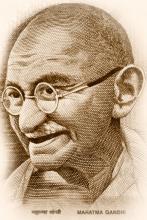
MARTIN LUTHER KING JR. once said that the greatest Christian of the 20th century was not a member of the church. He was referring to Mohandas Gandhi. A remarkable number of King’s fundamental beliefs—the use of active nonviolence as a tool of social reform, the commitment to loving one’s enemies—can be traced back to the influence of Gandhi, which means that one of the defining figures of 20th century American Christianity was profoundly shaped by the example of an Indian Hindu. As King said in 1958 of the civil rights movement, “Christ furnished the spirit and motivation while Gandhi furnished the method.”
But what of Gandhi’s influences? How did a skinny, middle-class, mid-caste Indian, so scared of public speaking as a student that a classmate had to read his speeches aloud for him, come to lead one of the great liberation struggles of the past century? A new book by Arvind Sharma, professor of comparative religions at McGill University, makes the case that the source of Gandhi’s strength was his spirituality. And while the heart of Gandhi’s faith was Hindu, as King’s was Baptist, the influences were remarkably diverse.
Pointing out that most of the biographies of Gandhi really tell the story of Mohandas Karamchand (the name he was given by his family), not Mahatma (a title that means “great soul” and is given to saints in India), Sharma’s book Gandhi: A Spiritual Biography sets out to give an account of the Mahatma. Sharma quotes Gandhi directly on the importance of highlighting the dimension of spirituality in any attempt to understand him: “What I want to achieve—what I have been striving and pining to achieve these 30 years—is self-realization, to see God face to face, to attain moksha [the Hindu term for liberation]. I live and move and have my being in pursuit of this goal.”
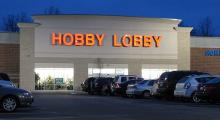
Hanukkah comes early this year. But it apparently never comes to Hobby Lobby.
The national craft store owned by conservative billionaire Steve Green seemingly refuses to carry merchandise related to Hanukkah because of Green’s “Christian values,” and some Jews are taking offense.
“I will never set foot in a Hobby Lobby. Ever,” wrote Ken Berwitz, the New Jersey blogger who brought the Hobby Lobby Hanukkah flap to light in a Sept. 27 blog post.
Berwitz’s outrage has spread to other bloggers who are taking Hobby Lobby to task as a store that courts the general public, but refuses to stock anything related to Judaism — even in communities with significant Jewish populations.

In a world far removed from the tragic cesspool of Washington scheming and maneuvering, real people flocked to Central Park on El Camino Real for this town’s first Bacon & Brew Festival.
It was wildly successful. Vendors ran out of food and beverages; sponsors closed off ticket sales early. The parched and mean-spirited landscape that ideologues are trying to manufacture seemed distant.
As they stood in line for burgers, barbecue, fries smothered in cheese, and microbrewed beers, young adults eyed each other’s pregnant bulges and baby strollers. I heard no muttering about Obamacare. People have better things to do than to defund a program that benefits fellow citizens.
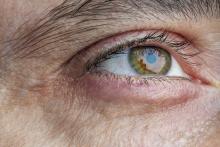
I GREW UP in rural Mississippi, a black girl who lived “out in the booneys,” fairly isolated from peers outside school. My God-fearing parents brought me up in an African Methodist Episcopal church that stood just beyond the edge of the woods. At the right age, I waded into a muddy watering hole, only recently vacated by the cows who drank there, and got dunked by the preacher and welcomed into the church and the kingdom of God.
That was my baptism, but I wouldn’t call it a conversion experience. I felt very innocent then, and would until I left home for college in Massachusetts. There I got my first taste of diversity. Most of my classmates didn’t believe as I did. Most of my African-American friends felt as if my faith was some kind of relic from our slave heritage, a white-supremacist trick that I had bought into.

So, here is the dilemma. Do I think so highly of myself to think that Warren’s apology and reference to an email is actually about me? That is ridiculous. I know there were others who emailed him. But for the sake of argument, let’s assume Warren is talking about my email, which I re-read. I never say “I am offended.” I had a lot of questions because I wanted to understand. I wanted to hear and open up dialogue because I didn’t understand Warren’s logic, humor, or joke. I really didn’t understand why Warren’s supporters would then try to shut down those who were offended (and I include myself in the camp of those hurt, upset, offended AND distressed) by telling us/me to be more Christian like they themselves were being.
There is no “if.” I am hurt, upset, offended, and distressed, not just because “an” image was posted, but that Warren posted the image of a Red Guard soldier as a joke, because people pointed out the disconcerting nature of posting such an image — and then Warren told us to get over it, alluded to how the self-righteous didn’t get Jesus’ jokes but Jesus’ disciples did, and then erased any proof of his public missteps and his followers’ mean-spirited comments that appeared to go unmoderated.
I am hurt, upset, offended, and distressed when fellow Christians are quick to use Matthew 18 publicly to admonish me (and others) to take this issue up privately without recognizing the irony of their actions, when fellow Christians accuse me of playing the race card without trying to understand the race card they can pretend doesn’t exist but still benefit from, when fellow Christians accuse me of having nothing better to do than attack a man of God who has done great things for the Kingdom.
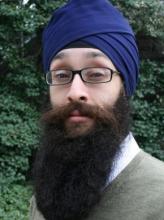
Shortly after teenagers beat up a Columbia University physician Saturday, a Muslim woman was attacked a few blocks away.
It is not clear whether the attacks on Dr. Prabhjot Singh and the Muslim woman, who were both treated at Mount Sinai Hospital in New York, are related. But many say the motives, if not the perpetrators, are depressingly familiar.
They are part of a long line of assaults on Sikhs, who are sometimes mistaken for Muslims; on Muslims; and, more generally, on people perceived as foreigners.
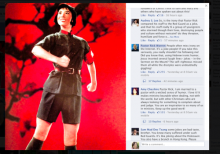
Author's Note: As of sometime Tuesday afternoon, the original Facebook post and tweet of this image has been removed. That is wonderful news. He has also issued an apology on Dr. Sam Tsang’s blog (linked later in this post) but not on his Facebook page or Twitter because it has all been removed. However, I am leaving up my original post because deleting something doesn’t actually address the issue, and the subsequent comments by supporters were never addressed. Those supporters may think the post was removed because he got tired of the angry Asians who don’t get it. Right now, it feels like I’ve been silenced. Pastor Warren actually did read many of the comments voicing concern about the post and responded with a rather ungracious response. My kids constantly hear me talk about the consequences of posting something up on social media and the permanence of that.
You know it’s going to be an interesting day when you wake up to Facebook tags and messages about “something you would blog about.”
My dear readers, you know me too well.
This photo appeared yesterday on Rick Warren’s Facebook page and Twitter feed. Apparently the image captures “the typical attitude of Saddleback Staff as they start work each day.” Hmmm. I didn’t realize Saddleback was akin to the Red Army. Warren’s defense (and that of his supporters) is one that I AM SO SICK AND TIRED OF HEARING!
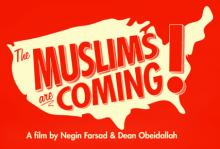
Muslim stand-up comedy is nothing new. But what makes “The Muslims Are Coming” different is that it portrays what happens when a troupe of comedians performs before red state Americans in such places as Tennessee, Georgia, Alabama, Mississippi, Florida, Arizona, Utah and Idaho.
The documentary by Negin Farsad, an Iranian-American, and Dean Obeidallah, of Palestinian-Italian roots, opened in Chicago yesterday.
A federal judge ruled Monday that the Abercrombie and Fitch clothing chain violated federal anti-employment discrimination guidelines when it fired a Muslim employee in 2010 for not removing her religious headscarf, or hijab, for work.
Abercrombie asserted that as part of its business plan, it not only employed sales-floor personnel, but “models,” had a “look policy” that gave employees certain grooming and appearance guidelines, and sought to give customers an “in-store experience.”
Umme-Hani Khan wore her headscarf when she interviewed at Abercrombie’s store in San Mateo, Calif. Khan said she accepted the “look policy,” which included a no headgear provision, and in October 2009 started her new job, which was mainly in the stockroom, but required her one to four times per shift to restock clothes on the sales floor.
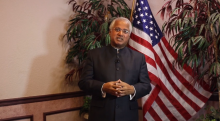
Three years ago, a nobody from nowhere got famous for doing something unpleasant.
The self-ordained pastor of an unknown Florida church threatened to burn a Quran. And then he did it. And then others with their own intentions picked up the story and used it to inflame Muslims in several nations.
The result: At least 50 people were killed, including seven United Nations employees.
Now that nobody is back, threatening to burn 3,000 Qurans on Wednesday as a “memorial” to the victims of the 9/11 attacks.
You may have noticed I’ve not named the man. That’s not an accident. Publicity is what he wants and I had decided that my small protest against him would be to not contribute to it. While I defend his legal right to do this, nobody needs to add to his spotlight.
And then I heard about a planned counterdemonstration by a Muslim interfaith activist, Mike Ghouse, who’s been plugging away at his cause for years. This year he’s bringing his 10th annual “Unity Day USA” to the same Florida town where the pastor has threatened to burn the Qurans.
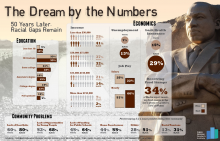
Yesterday’s “Let Freedom Ring” ceremony in Washington, D.C., honored the nation's substantial advances in racial equality in the fifty years since Dr. Martin Luther King, Jr. delivered his now-iconic “I Have a Dream” speech.
But events this year — from the Supreme Court gutting the Voting Rights Act to the House eliminating funding for food stamps to the Trayvon Martin trial — are posing serious challenges to our national progress towards true equality for all.
An infographic from the Public Religion Research Institute, "The Dream by the Numbers," highlights systemic inequalities that still work against communities of color today. The statistics are grim: black communities are unemployed at nearly double the rate of white communities. Fewer than 20 percent of black youth will receive a college or graduate degree. Twice as many blacks lack health insurance as whites. And nearly 70 percent of blacks surveyed mentioned “lack of opportunities for young people” as a top concern for their community.

"We all have a story to tell."
These are the words that will greet my new elementary students as they enter my classroom this year.
I will tell them my story: who I am, what I do, when I was born, where I have lived, why I am a teacher, how I came to our school.
I will tell them this story: When I was their age, I carried a tattered journal, a Papermate pen, and a pocket dictionary everywhere I went. I wrote about the people, places, and things I saw with my eyes, heard with my ears, smelled with my nose, tasted with my tongue, and felt with my hands. I put down on paper the ideas and feelings that were floating around in my head and my heart. I was nerdy (and still am) ... but I was me!
"Will you tell me your story?" I will ask them.
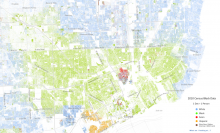
Rev. Dr. Martin Luther King immortalized many phrases still used in the contemporary American lexicon. But it was on Dec. 17, 1963 in a talk at Western Michigan University when he noted that the “most segregated hour in this nation” is 11 a.m. on Sunday.
Though many of King’s other famous quotes come from scripted speeches, the comment above actually was from part of a question-and-answer session with students and faculty about racial integration. He was asked if he believed that true racial integration must be spearheaded by the Christian churches, rather than in workplaces or on college campuses.
Suffice it to say that Dr. King begged to differ, and sadly, his words spoken 50 years ago ring eerily prophetic as we scan the halls of most of our churches. What he claimed then is still, today, a stark reality. He went on in his response:
“I’m sure that if the church had taken a stronger stand all along, we wouldn’t have many of the problems that we have. The first way that the church can repent, the first way that it can move out into the arena of social reform is to remove the yoke of segregation from its own body.”
But how? About the same time King made these keen observations, white people were leaving the inner cities by the millions, establishing more homogenous suburbs on the far boundaries of town. So-called “white flight” took hold, creating entirely new municipalities, while decaying urban centers were hollowed out, left only with an aging infrastructure and those who had no choice but to endure being left to fend for themselves.
As such, our churches were, in some ways, byproducts of the communities in which they found themselves.
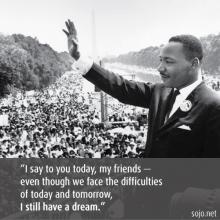
Yesterday was the 50th anniversary of a day that changed America, changed the world, and changed my life forever. I was fourteen years old on Aug. 28, 1963, in my very white neighborhood, school, church, and world. But I was watching. The Rev. Dr. Martin Luther King, Jr., became a founding father of this nation on that day, so clearly articulating how this union could become more perfect.
He didn’t say, “I have a complaint.” Instead, he proclaimed (and a proclamation it was in the prophetic biblical tradition), “I have a dream.” There was much to complain about for black Americans, and there is much to complain about today for many in this nation. But King taught us that day our complaints or critiques, or even our dissent will never be the foundation of social movements that change the world — but dreams always will. Just saying what is wrong will never be enough the change the world. You have to lift up a vision of what is right.
The dream was more than the Civil Rights Act and the Voting Rights Act, which both followed in the years after the history-changing 1963 March on Washington for Jobs and Freedom. It finally was about King’s vision for “the beloved community,” drawn right from the heart of his Christian faith and a spiritual foundation for the ancient idea of the common good, which we today need so deeply to restore.

WASHINGTON — Fifty years to the day after Martin Luther King, Jr., knocked on the nation’s conscience with his dream, religious leaders gathered in a historic church to remind the nation that he was fueled by faith.
Later, in the shadow of the Lincoln Memorial where King thundered about America’s unmet promises, King’s children joined the likes of President Barack Obama and Oprah Winfrey to rekindle what Obama called a “coalition of conscience.”
At Shiloh Baptist Church, where King preached three years before his 1963 “I Have A Dream” speech, Christian, Jewish, Muslim, and Sikh clergy summoned King’s prophetic spirit to help reignite the religious fires of the civil rights movement.
King’s daughter, the Rev. Bernice A. King, said at the service that her father was a freedom fighter and a civil rights leader, but his essence was something else.
“He was a pastor,” said King, who was 5 when her father electrified the nation in front of the Lincoln Memorial. “He was a prophet. He was a faith leader.”
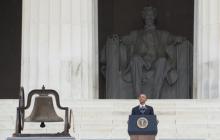
Editor's Note: The following is a transcript of President Barack Obama's speech from the Lincoln Memorial on the 50th Anniversary of the March on Washington.
We rightly and best remember Dr. King’s soaring oratory that day, how he gave mighty voice to the quiet hopes of millions; how he offered a salvation path for oppressed and oppressors alike. His words belong to the ages, possessing a power and prophecy unmatched in our time.
But we would do well to recall that day itself also belonged to those ordinary people whose names never appeared in the history books, never got on TV. Many had gone to segregated schools and sat at segregated lunch counters. They lived in towns where they couldn’t vote and cities where their votes didn’t matter. They were couples in love who couldn’t marry, soldiers who fought for freedom abroad that they found denied to them at home. They had seen loved ones beaten, and children fire-hosed, and they had every reason to lash out in anger, or resign themselves to a bitter fate.
![President Lyndon Johnson and Martin Luther King, Jr. By Yoichi R. Okamoto [Public domain], via Wikimedia Commons By Yoichi R. Okamoto [Public domain], via Wikimedia Commons](https://sojo.net/files/styles/medium/public/blog/512px-Lyndon_Johnson_and_Martin_Luther_King%2C_Jr._-_Voting_Rights_Act.jpg)
We’ve spent the last few days recalling the anniversary of the March on Washington and listening again to the Rev. Martin Luther King, Jr., talk so powerfully about his dream of a land that is full of love and free of hatred. Stirring words. Inspiring words. Spirit-infused words. We’re also reminded that they’re only words until they produce action.
It’s one thing to be inspired when we hear something, another thing to respond to the inspiration and to do something.
Powerful words play a big role in our lives, challenging us and leading us. God is love. Love one another. Be compassionate. Love your enemies. Whatsoever you do to the least. Your brother‘s keeper. An instrument of your peace. Give to all. The moral arc of the universe is long, but it bends toward justice. Blessed are the poor. All men are created equal. The common good. Government of, by and for the people. I have a dream. Be the change. Make justice a reality for all God‘s children.
Those and so many other words inspire us to raise our lives and our world to new heights. But they remain words until we commit ourselves to live them. Then they acquire real power.
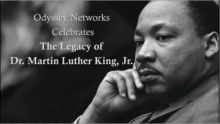
The upcoming March on Washington has been on my mind as I reflect upon this week’s Gospel reading from Luke about a banquet. I personally love banquets. You get to adorn yourself with the finest trappings, dance the night away, and if the food is good, that is an added plus! But what I find most frustrating? Knowing a banquet is occurring, and I have not been invited. “Did I do something wrong? Do I not meet a certain standard? Who did get invited?” My wondering is filled with emotion.
What if America was a banquet, and at this banquet the servings were fair wages, just trials, civil rights and liberties, but offered by invitation only? According to those who “March(ed) on Washington,” this was exactly the case. Blacks deserved the same fair treatment as whites, and they were protesting to bring about the necessary changes. Perhaps if everyone took heed of Jesus’ instructions on banquet etiquette, things would be different and better.
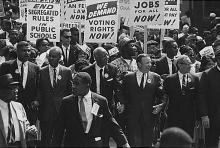
I will march on Saturday because I refuse to allow my two sons to be treated as statistics or a stereotypes rather than as children of God. I will march because overly aggressive policing tactics that overly rely upon racial profiling make a mockery of Dr. King’s dream that every child will be judged by the content of their character and not the color of their skin.
I will march because the recent repeal of section four of the Voting Rights Act by the Supreme Court jeopardizes the voting rights of millions of Americans across the country, particularly in southern states where new barriers to this sacred right are already being erected.
I will march because based on national statistics, my two black boys face a one in three chance of spending some time of their lives behind bars, a disturbing and destructive reality that has been made possible in part by mandatory drug sentencing laws that must be reevaluated and changed.
![By U.S. Information Agency, Press and Publications Service. [Public domain], via Wikimedia Commons [Public domain], via Wikimedia Commons](https://sojo.net/files/styles/medium/public/blog/View_of_Crowd_at_1963_March_on_Washington.jpg)
Even with the scores of marches on Washington since 1963, we all still know what we mean when we say the March on Washington.
In our collective memory, we see black-and-white images of immaculately dressed men and women wearing hats, ties, and dresses, marching in dress shoes. We see a sea of people stretching from the Lincoln Memorial to the Washington Monument. And we see Dr. Martin Luther King, Jr., frozen in time, smiling and waving to the crowd of a quarter million people. We see King’s passion, mouth open as he bellows words that sear the conscience of a nation and ignite its imagination. His arm is outstretched over the podium. He is surrounded by men and women who are also there to plead with a nation to “let freedom ring!”
These images are seared into our nation’s memory, even though most of us were not there.